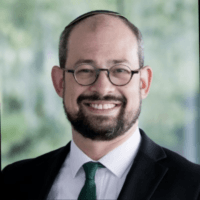In the last few years, AI has whooshed into our personal and work lives like a high-speed bullet train. While few deny the convenience it brings, it is important to remember that we are along for the ride as passengers. In this short time, AI has already demonstrably improved car safety, streamlined scheduling, personalized online shopping, and even supercharged search engines.
Like any high-speed train, the rapid pace of AI requires adjustments. AI is accelerating code creation in software development forcing companies to adapt by streamlining testing processes to keep up with demand.
According to the latest GitClear report, 92% of US-based developers working in large companies are using an AI coding tool, with 55% reporting faster coding. AI-code assist tools are sparking productivity gains, but they have also created obstacles throughout the entire SDLC that lead to bottlenecks during testing processes.
Manual testing has always had its difficulties. The proliferation of AI has emphasized the point that an increased volume of code can potentially weaken this already vulnerable process in the SDLC. Manual testing can create slow and inefficient processes that are labor-intensive and costly. The true complication of manual testing is the risk of human error, and on the technical side, it is unscalable.
To streamline the code review process, automated testing tools help overcome these challenges with increased efficiency and visibility, among other key benefits. In fact, according to Gartner’s “Market guide for AI-augmented software testing tools” 2022 report, 48% of organizations are using AI and ML in their testing, and the numbers are expected to grow to 64% by 2025.
Automated testing, which is the use of software tools to automatically execute tests and analyze results promises significant relief from long-standing testing burdens, offering tools like integrations into CI/CD pipelines, AI-powered test creation, self-healing, and predictive risk assessment that increase efficiency and visibility while preserving developer time and reducing risk.
Turning the key: Overcoming software testing hurdles with AI-driven solutions
More code means more need for testing. To keep up with consumer market demands and to shine among the competition while building quality software efficiently, code productivity and AI-model quality need to be balanced. A typical commercial project has an average of 40 vulnerabilities in first-party code. AI co-pilots can duplicate and exacerbate security vulnerabilities, according to 2023 data from Snyk.
Automated testing tools provide the capabilities needed to handle the increase in volume many development teams may be experiencing with the following benefits:
- Reduced testing time – According to “The state of AI in quality engineering” report published by Capgemini in 2023, automated testing techniques are reducing testing times by 50%, allowing developers and testers more time to focus on other aspects of the SDLC.
- Decreased defect escape rate – The accuracy provided by automated testing tools decreases the number of code defects making it into the production phase of software development. A lower defect escape rate reduces headaches for developers and streamlines the process of pushing code out the door. In 2023, Capgemini also reported a 40% reduction in defect escape rate with AI-augmented testing tools.
- Increased test coverage – AI-augmented testing tools provide the bandwidth and self-healing capabilities to increase the amount of code that is tested. They also further simplify test creation increasing the number of test scripts that are written. The report by Capgemini cites a 30% increase in test coverage with these enhancements.
Unlocking quality: AI and ML forge the key to continuous automated testing
The evolution of AI and ML in testing is a game-changer for every large enterprise building and delivering web and mobile applications. As we move forward, enterprises can expect a surge of innovation in the continuous automated testing market, with applications like:
- Synthetic test data generators – Leverage AI to create realistic, anonymized test data sets. These will create vast and varied test scenarios, uncovering edge cases and pushing the boundaries of what enterprises can test.
- Intelligent test assistants – Use machine learning to analyze test data, identify patterns, and even suggest improvements to test cases. It is a collaboration that significantly boosts productivity and efficiency for testers.
As organizations continue to embrace these techniques, they will unlock a future of higher-quality software and enhanced user experience that will allow them to dominate the competition. Enterprises are witnessing growth and expansion in software development, akin to the leaps in productivity during the Industrial Revolution. AI-augmented testing tools are not becoming commonplace purely by chance; they are reaching the mainstream because they are the only option to keep pace with innovation.
AI is enabling testing to reach a new level of sophistication that anticipates and uncovers hidden issues in code, which has become necessary as the bullet train of AI development keeps accelerating code volume. This promises a future of not just faster testing, but also a dramatic leap in the overall quality and reliability of software.












